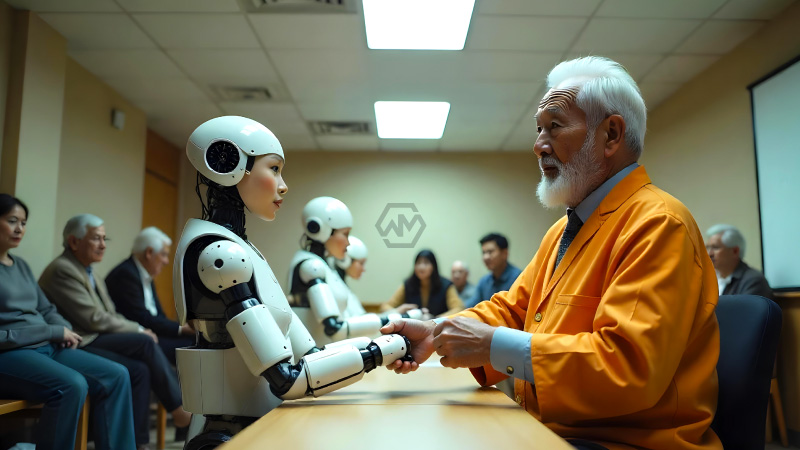- China’s new policy promotes the use of humanoid robots, AI, and brain-computer interfaces for elderly caregiving.
- This move addresses the challenges posed by the country’s aging population and labor shortages.
- The strategy also emphasizes intelligent home systems and early safety risk detection in senior care.
The Chinese government’s new policy, announced by the State Council and Communist Party on December 30, 2024, paves the way for integrating humanoid robots into elderly care.
Along with robots, the initiative promotes the development of AI technologies, brain-computer interfaces, and intelligent home systems.
China’s Innovative Approach to Senior Care: Humanoid Robots and AI Integration
In response to its rapidly aging population, China is taking a pioneering approach to eldercare with humanoid robots. The country’s new policy seeks to modernize caregiving through the development of robots equipped with advanced human-robot interaction skills. These robots are expected to enhance healthcare services, provide companionship, and support daily activities for seniors who require assistance.
The integration of artificial intelligence is another critical element of this initiative. The Chinese government is focusing on AI to create smarter caregiving solutions, from automating household tasks to helping manage medical needs. Brain-computer interfaces will also allow for more seamless communication between elderly individuals and the robots, making caregiving more personalized and responsive.
Additionally, China is not only focusing on robotic caregivers but also enhancing home environments through intelligent systems. These systems are designed to monitor the safety of elderly individuals in real-time, offering alerts for potential health risks, such as falls or medical emergencies, thereby increasing seniors’ independence and quality of life.
By incorporating cutting-edge technology, China hopes to lead the way in transforming elderly care globally. The long-term goal is to ensure that as the population ages, seniors can live comfortably and safely, with the assistance of robots and smart technologies that alleviate caregiver shortages.
China’s push for humanoid robots and AI in elderly care represents a groundbreaking step toward addressing the challenges of an aging population, promising more personalized and efficient solutions.
“As technology continues to evolve, China’s adoption of humanoid robots for elderly care showcases how innovation can tackle societal challenges such as an aging population.”



